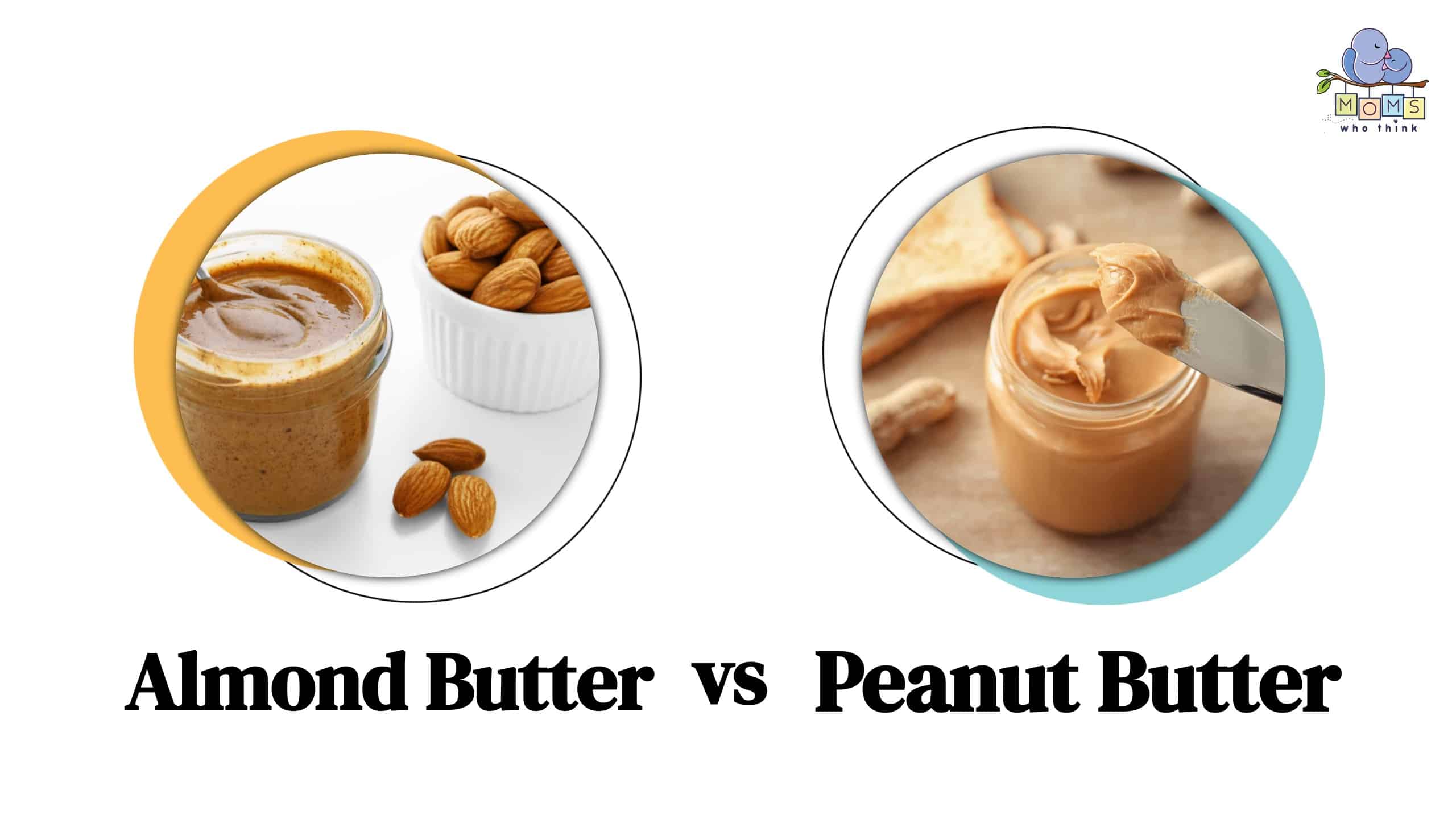In addition to the obvious difference that one is made with peanuts and the other is made with almonds, the debate of almond butter vs. peanut butter ultimately comes down to the nutritional aspects. Almond butter has less sugar and more nutrients, while peanut butter offers more protein and fiber.
Almond Butter vs. Peanut Butter: What Is the Difference?
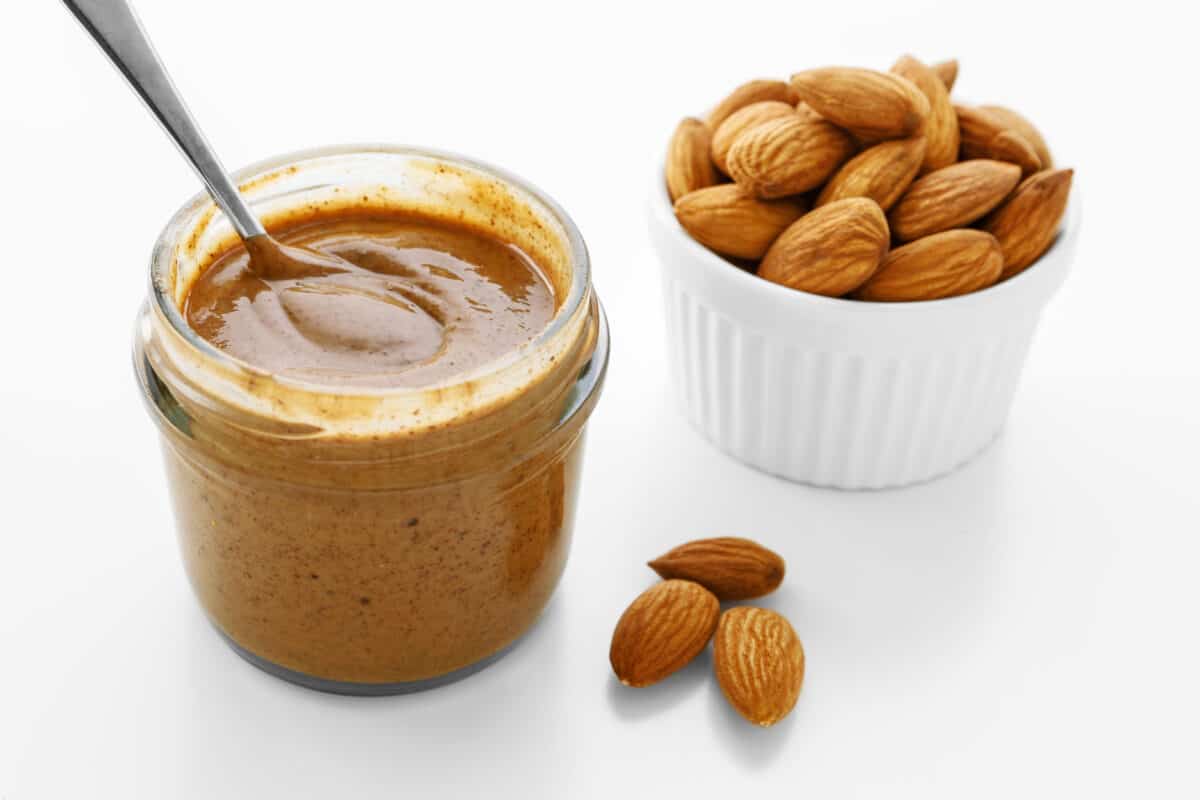
©everydayplus/Shutterstock.com
The primary difference between almond butter and peanut butter is their taste. Almond butter has a slightly sweet, nutty flavor and creamy texture while peanut butter has a richer, more robust flavor. Other differences include price, with almond butter generally being more expensive.
As you can imagine from their names, almond butter is made from almonds while peanut butter is made with peanuts. However, while peanut butter is made with dry-roasted peanuts, almond butter can be made with either roasted or raw almonds.
Your decision whether to buy almond butter or peanut butter will likely come down to taste preferences, dietary restrictions, and requirements for specific recipes.
- The must-have convenient reference guide for every home cook!
- Includes more than 8,000 substitutions for ingredients, cookware, and techniques.
- Save time and money on by avoiding trips to grab that "missing" ingredient you don't really need.
Almond Butter vs. Peanut Butter Nutrition: Calories, Protein, and More
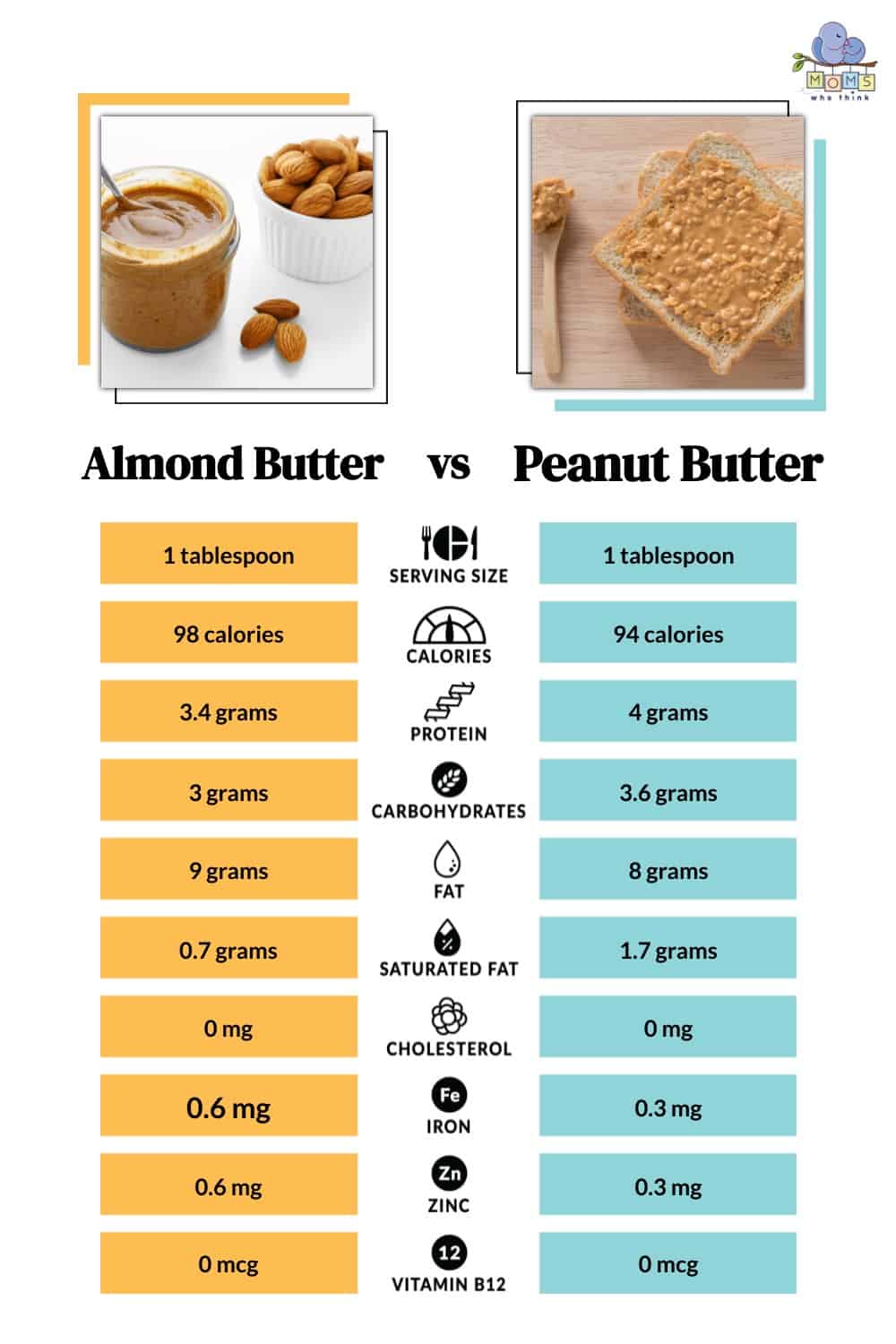
©
It might surprise you to see that almond butter and peanut butter generally have very similar calories per serving. Both have about 100 calories per tablespoon; however, they do differ in health benefits that we'll discuss below.
It's important to note that different brands will have varying amounts of calories. If you're looking for a healthy first step, look for peanut and almond butter that keep added sugars to a minimum.
Almond Health Benefits
The other major difference related to almond butter vs. peanut butter is the nutritional benefits. For instance, while both contain monounsaturated fat, almond butter contains about 25% more than peanut butter. This is a good type of fat that can help reduce the chances of heart and blood diseases.
Almond butter is also the winner when it comes to mineral and vitamin content. Again, both options offer plenty of vitamins. However, almond butter has three times as much vitamin E, seven times more calcium, and twice as much iron as peanut butter. Vitamin E helps to keep your veins clean, which is essential for heart health. Calcium is essential for bone health. Iron is necessary for healthy red blood cells.
Peanut butter is known for its fiber content, which helps us to feel full for longer while also lowering our cholesterol. However, almond butter has even more fiber, which makes it a bit better if you’re on a diet.
Finally, we come to protein. Peanut butter has more of it. The protein content is great for reducing muscle loss, maintaining a healthy weight, building lean muscle, and speeding recovery after a workout.
Price Difference
Another difference between these two products is the price. Peanut butter is exponentially less expensive because of how common peanuts are as opposed to almonds. Peanuts are found all over the world, and since they grow underground, they don’t take up much space, so there are lower property costs.
Alternatively, almonds are tree nuts that need specific soil and climate conditions, so they aren’t as frequently grown. It takes more time to fill a jar of almond butter, so it’s not surprising that shoppers can expect to pay more than $10 per container.
Almond Butter vs. Peanut Butter: What Are the Similarities?
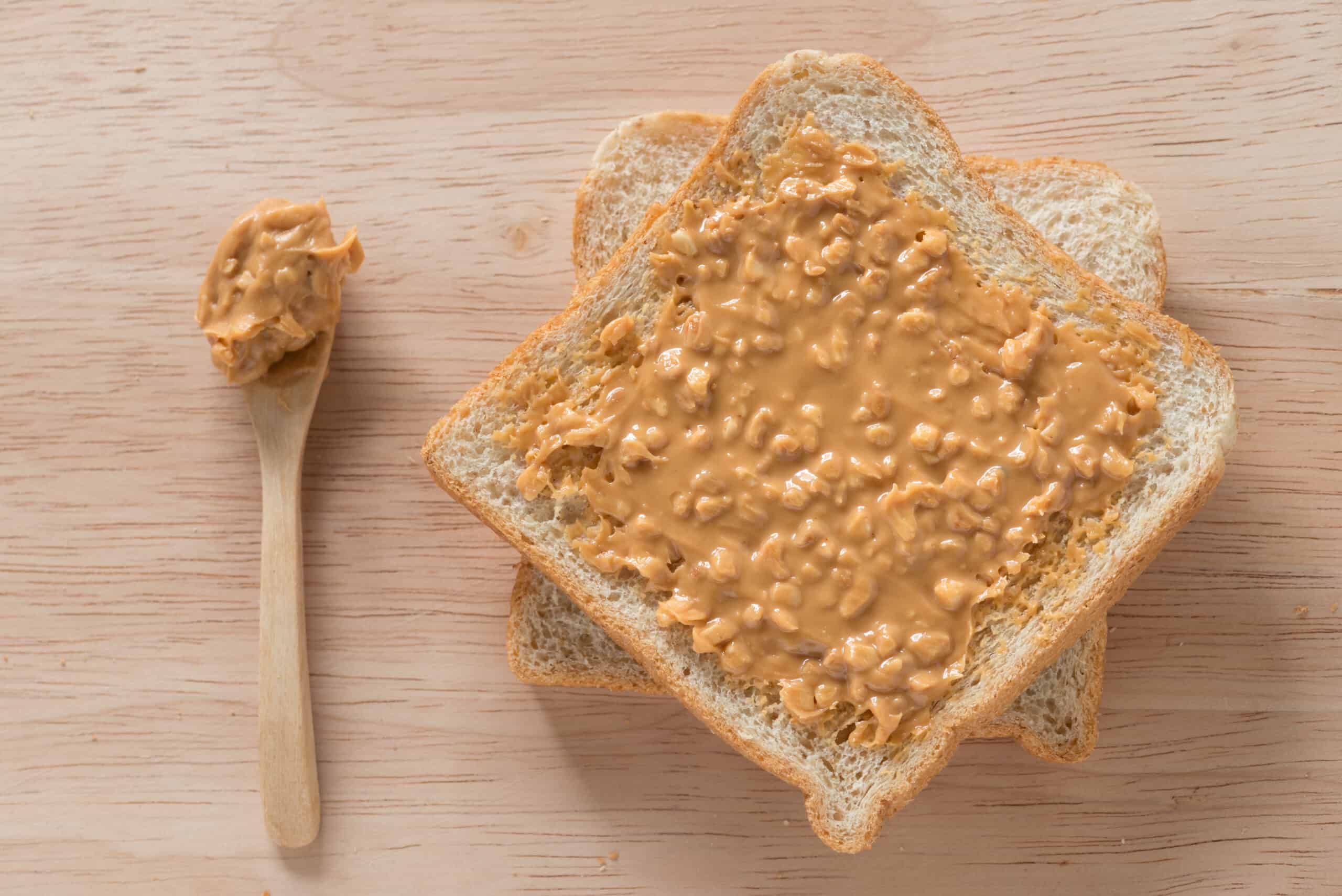
©inewsfoto/Shutterstock.com
One of the most surprising common denominators in the almond butter vs. peanut butter discussion is that, technically, neither peanut butter nor almond butter is made from actual nuts. In reality, peanuts are actually legumes, which are more closely associated with lentils and beans than actual nuts. Meanwhile, almonds are technically seeds and not really nuts.
However, while this fact may be strange, it is why both products are so healthy. Both legumes and seeds are rich in fiber, protein, healthy fats, and carbohydrates.
Another similarity between these two products is the reality that they're both allergens. In fact, almonds and peanuts are the most common allergies. If you are allergic to either, avoid both products at all costs.
Finally, both products are very low in calories. Two tablespoons of either almond or peanut butter will be less than 200 calories.
Benefits of Almond Butter
We have talked a lot about the great taste and nutritional benefits of eating creamy and crunchy peanut butter. It’s a delicious treat that has many perks. The same is true of almond butter. Here are some additional health benefits to consider.
Brain Benefits
As we’ve discussed, almonds contain many healthy nutrients. One of which is vitamin E, which in addition to contributing to heart health, also is instrumental in slowing down the aging of our brain cells. When your brain cells are healthy, and they can easily communicate with one another, it slows the potential for mental decline, so there’s less of a chance of ailments like dementia. Almond butter also contains zinc, which can boost our immune system and prevent viral infections in the brain.
- The must-have convenient reference guide for every home cook!
- Includes more than 8,000 substitutions for ingredients, cookware, and techniques.
- Save time and money on by avoiding trips to grab that "missing" ingredient you don't really need.
Blood Sugar Levels
It’s essential that you keep an eye on your blood sugar levels because if you don’t, you could experience frequent symptoms like dizziness, irritability, a fast heartbeat, and constant stress and anxiety. By eating two ounces of almonds, you could lower your glycemic index, which keeps your blood sugar under control.
Good for Your Gut
When we eat almonds, they serve as probiotics that feed our gut healthy bacteria that produce nutrients that ensure that we have a healthy digestive system. A good gut means a strong immune system, which means we can get sick less often, and we’ll have a better mood throughout the day.
Get Glowing Skin
In addition to vitamin E, almond butter also contains zinc and copper. All three of these nutrients promote slow aging and help us to keep the integrity of our skin. That’s why there are many almond creams that people can buy as part of their skincare regimen.
Alternatives for Almond and Peanut Butter
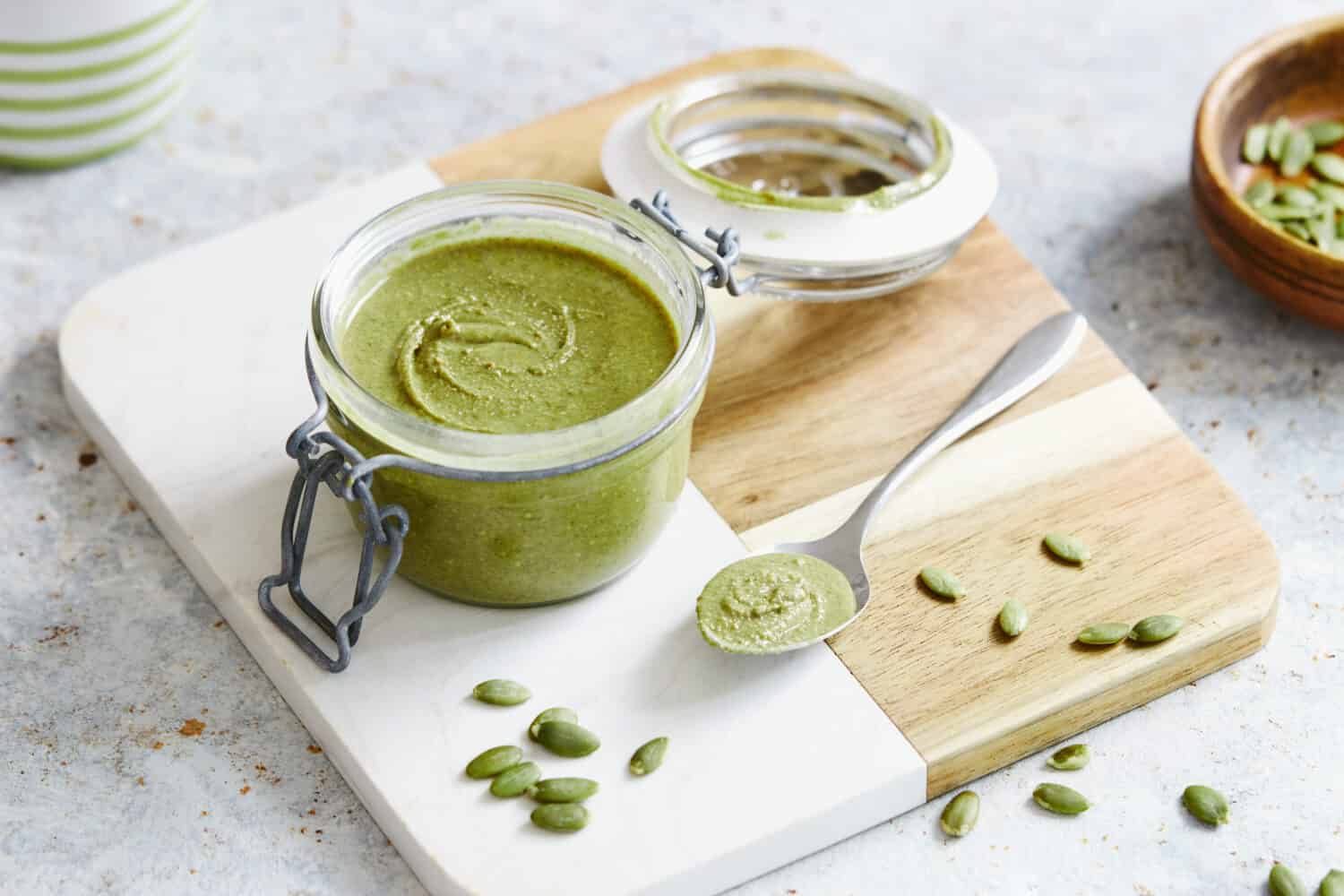
©Melica/Shutterstock.com
When some people think about the argument of almond butter vs. peanut butter, they aren’t satisfied with either option. If you don’t like the taste of either almonds or peanuts, or you are allergic to one or both, then there are some alternatives to consider:
Cashew Butter
Basically, the next most healthy form of butter is cashew butter, which is loaded with minerals and vitamins. Cashews are more sweet, so that will be reflected in the flavor. However, cashew butter also has more of a neutral flavor, so it works great as a component in savory dishes.
Pumpkin Seed Butter
If you’re trying to avoid nuts, then consider pumpkin seed butter, which is a great source of magnesium, iron, and vitamin E, just like almond butter. Just keep in mind that pumpkin seed butter will have a green color.
Tahini
Another way to avoid nuts is to add tahini, which will give your dishes an earthy if slightly bitter flavor, but it tastes great. Add it to your sauces and dips.
Granola Butter
This is a relatively new product, but it’s taking the world by storm because it’s made with oats that provide a great texture. There are also different flavors. Granola butter is soy-free, nut-free, vegan, and gluten-free.
Chickpea Butter
Made from garbanzo beats, chickpea butter offers a neutral flavor, but it’s a great substitute for both peanut and almond butter. You can add a little extra flavor by mixing in vanilla or cinnamon.
Mashed Black Beans
This may seem strange at first, but mashed black beans, which are beans and water turned into a paste, offers a great consistency. Don’t worry. When you eat it, you don’t taste the beans.
Peanut Butter Recipes
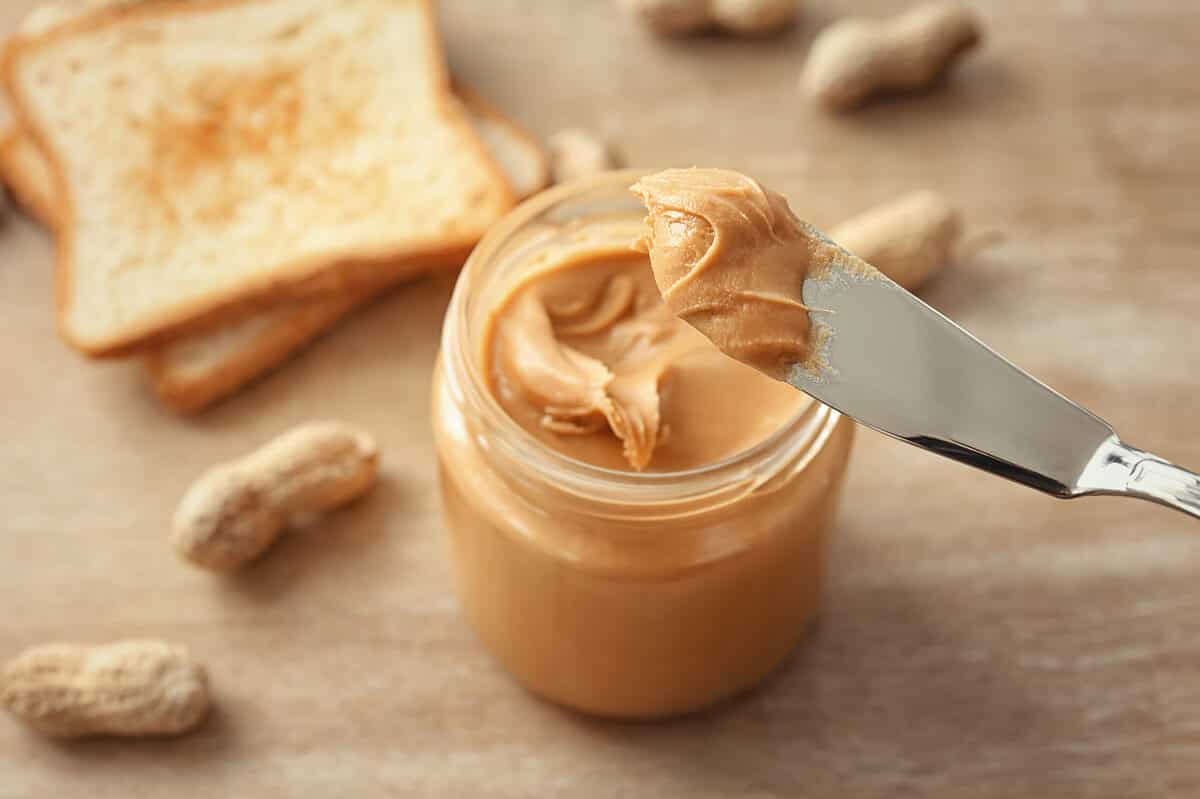
©New Africa/Shutterstock.com
Peanut butter is a very malleable ingredient that can be used in many dishes and sweet treats. Here are some of our favorites:
Print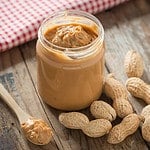
Old School Peanut Butter Bars
Ingredients
- 1 cup Butter, softened
- 1 cup Sugar
- 1 cup Brown sugar
- 1 1/2 cups Flour
- 1 1/2 cups Oats
- 1 tsp. Baking Soda
- 1 tsp. Salt
- 1 cup Peanut Butter
- 2 Eggs
- 1/2 tsp. Vanilla
Chocolate Frosting
- Melt 1 stick butter, add:
- 4 tbsp. Cocoa
- 6 tbsp. Milk
- 1 pound Powdered Sugar (half of a bag)
- 1 tsp. Vanilla
Instructions
- Mix well and spread onto cookie sheet.
- Bake at 375 for 10-15 minutes, then let cool completely.
- Spread with peanut butter, and then top with chocolate frosting.
- Beat well, then pour and spread on top.
- Frosting will set as it sits.
- Chocolate Kiss Cookies – The peanut butter adds an extra layer of flavor.
- Peanut Butter Cake – Ooey gooey cake with a peanut butter punch.
- Peanut Butter Cheesecake – Peanut butter and cheesecake filling make the perfect dish.
Almond Butter Recipes
You can basically mix in almond butter in place of peanut butter in any dish. However, almond butter can do a great service to these dishes:
- Butter Chicken – Add an extra kick with almond butter and khoya.
- Sweet Potato Casserole – You can use either peanut or almond butter in this dish.
- Cranberry Nut Bread – Spread almond butter on top to make it perfect.
- Pear Pastries – Add almond butter in the middle for a great taste.
Conclusion
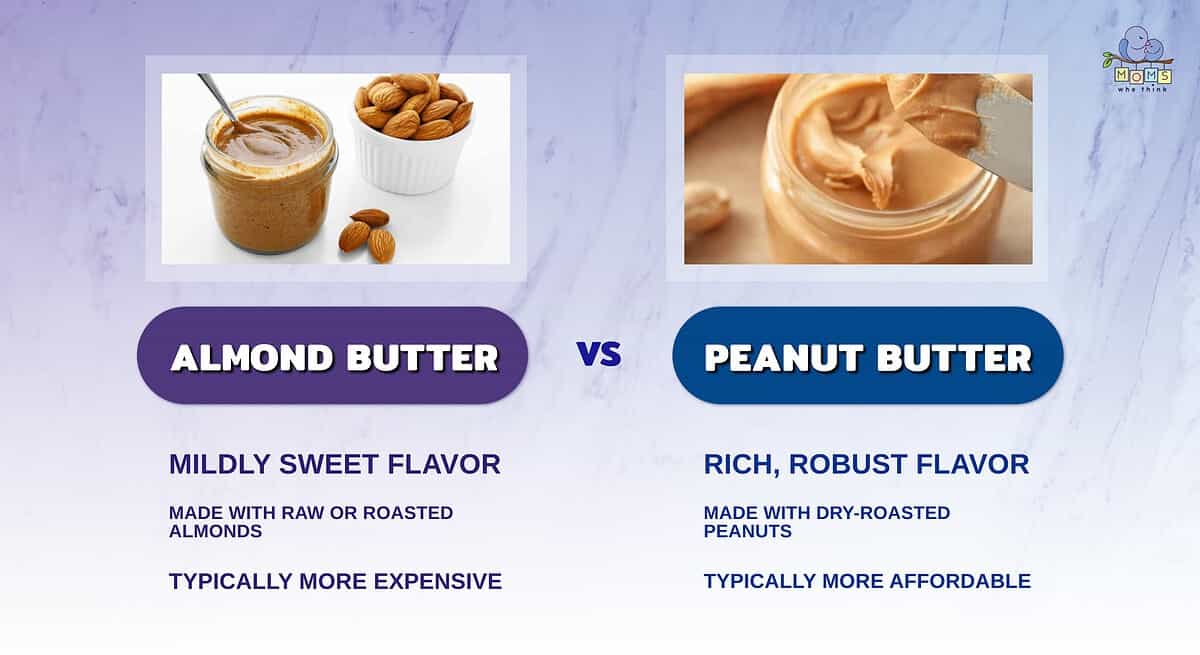
- Almond butter has a mild, sweet flavor, while peanut butter is known for its complex and savory flavor.
- Peanut butter is always made with dry-roasted peanuts, but almond butter can be made with either raw or roasted almonds!
- Since almond butter is typically more expensive than peanut butter, it's not as accessible for the average American. Peanut butter is known for being relatively affordable for most.
In the end, the main differences in the almond butter vs. peanut butter debate is the type of ingredient and the nutritional content. Both are very healthy foods that you can use in a variety of dishes. Choose the best option for your family and incorporate it into your next meal.
- The must-have convenient reference guide for every home cook!
- Includes more than 8,000 substitutions for ingredients, cookware, and techniques.
- Save time and money on by avoiding trips to grab that "missing" ingredient you don't really need.
